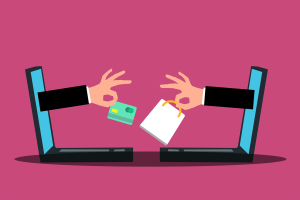How to easily spot chargebacks and how to prevent them
Shopping has changed completely in recent years. While just 10 year ago it was unimaginable to buy everything online, now that is just a normal day. No longer is it just a select few who have an online presence, all of the businesses and organizations had to evolve and accept the new opportunities the internet offers. Both businesses and customers have benefited from this as it made selling and shopping a lot more convenient. Ecommerce businesses can now reach customers all over the world, regardless of what they are selling. This made everything easier for customers also, as they can find the product they are searching for regardless how specific or specialized the item is and they can even find the best offer. And since the pandemic started, the online retail purchases have exploded even more than before. In 2020, over $861 billion was spent online which was 44% higher than the year before.

Even though the benefits online shopping brings to the mechants, it also brought some downsides. It made them more accessible to customers, but also to the fraudsters. This shift to online shopping provided a bigger playground to the fraudsters, and they keep finding new ways to scam merchants from their hard earned money.
The main type of fraud that is affecting ecommerce businesses is called chargeback fraud.
What is chargeback?
A chargeback happens when a customer disputes a transaction from your business with their card provider (most often their bank). The card provider then raises the dispute with the merchant and reverses the payment. Chargeback often happens as the result of fraud. Chargeback has a lot of negative impact on a merchant, from the loss of merchandise and any revenue connected with the sale to paying chargeback fees or even getting their account terminated by the bank as they consider your business a high risk.
There are some red flags that you might encounter that can help you spot chargeback fraud and help you prevent it:
- Unusually large orders
- Customer demanding expedited order
- Several transactions from the same card but with different shipping addresses or opposite.
- Orders made from the same IP addresses but with different credit card numbers
- Location of IP address not matching billing or shipping address
- Inconsistencies in customer information with a different purchases
How to prevent chargebacks?
Chargebacks are becoming a bigger and bigger threat in ecommerce, and it is time for business to step it up and start actively fighting against it. Luckily there are some things you can do right now to minimize risk of chargebacks:
Be clear and descriptive with every aspect of your business:
- Make sure all of your policies are clear and easy to understand, especially the ones relating to returns and shipping.
- Your merchant descriptor needs to be as clear as possible to prevent customers not recognizing the transaction on their card statement and use your business name throughout the entire order process making sure it is always clearly visible.
- Be as descriptive and accurate as you can about your products to avoid disappointed customers requesting a chargeback because the product they received didn’t meet their expectations.
Be accessible.
Large number of chargebacks could’ve been prevented by merchants being accessible and easily reached by customers. Make sure your contact details are easy to find and to include them on any documentation you might exchange with customers, from emails to receipts or packing slips. Maybe the customer is not satisfied with the product because they don’t think it looks like it is supposed to, maybe the product wasn’t delivered or was damaged in the transport, regardless of the reason, the merchant should be their first point of contact and not the bank. By having an open communication channel with customers you can solve any issue as soon as it arises and avoid unnecessary chargebacks. Keep in mind that a direct refund will cost a lot less than a chargeback.
Implement fraud prevention tools.
This is your most important line of defense as it can stop the fraud before it causes any damage to your company. The fraud prevention tools like data enrichment, device fingerprinting, social media or email lookup or behaviour analysis use machine learning to gather information about customers to confirm if they are who they say they are and to recognize any patterns or red flags that might indicate the fraud attempt. This information is then used to prevent chargebacks.
You won’t be able to eradicate chargeback completely from your business, but by following these tips you can significantly reduce it.

